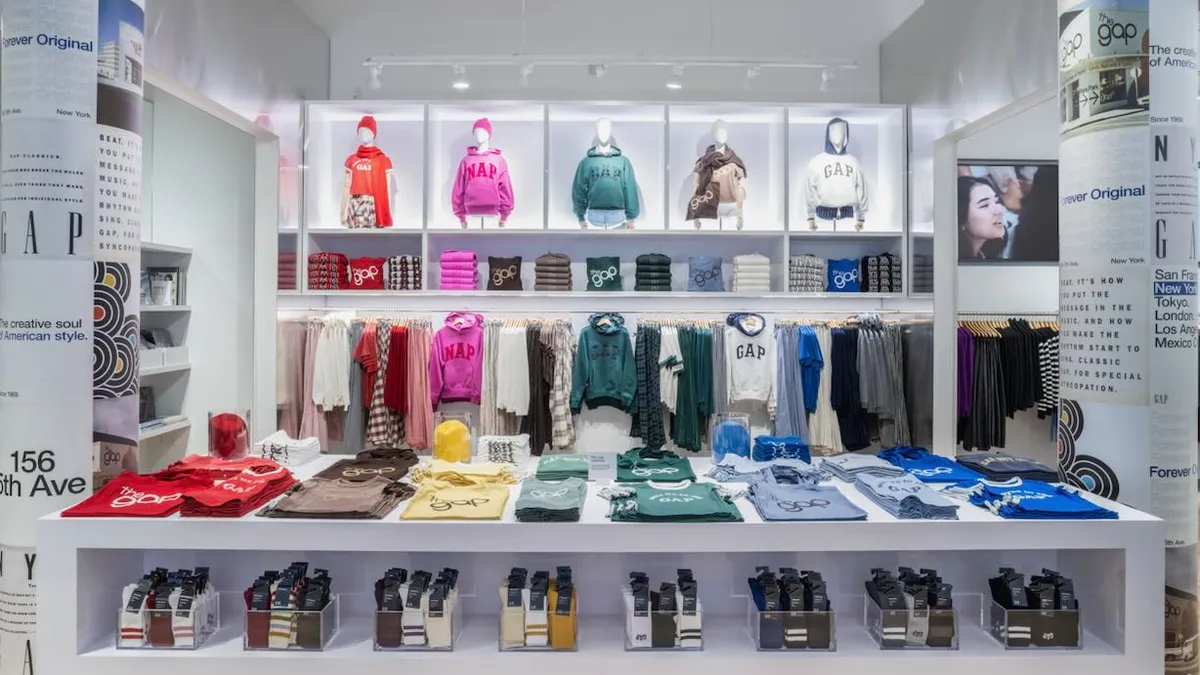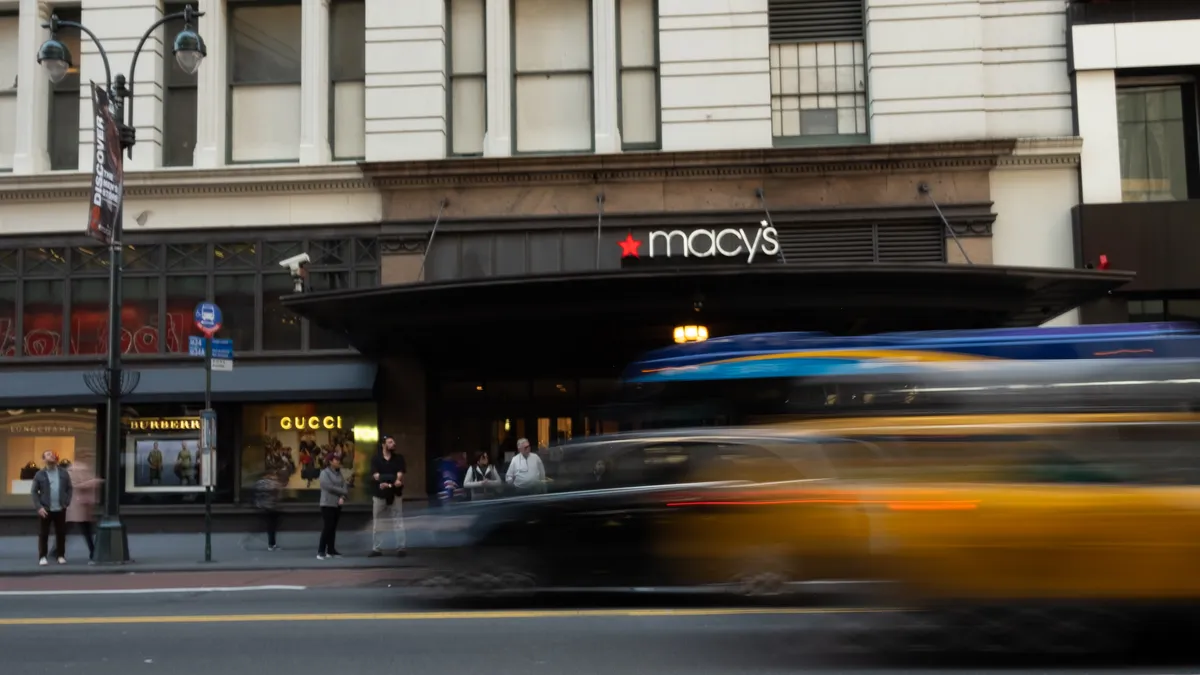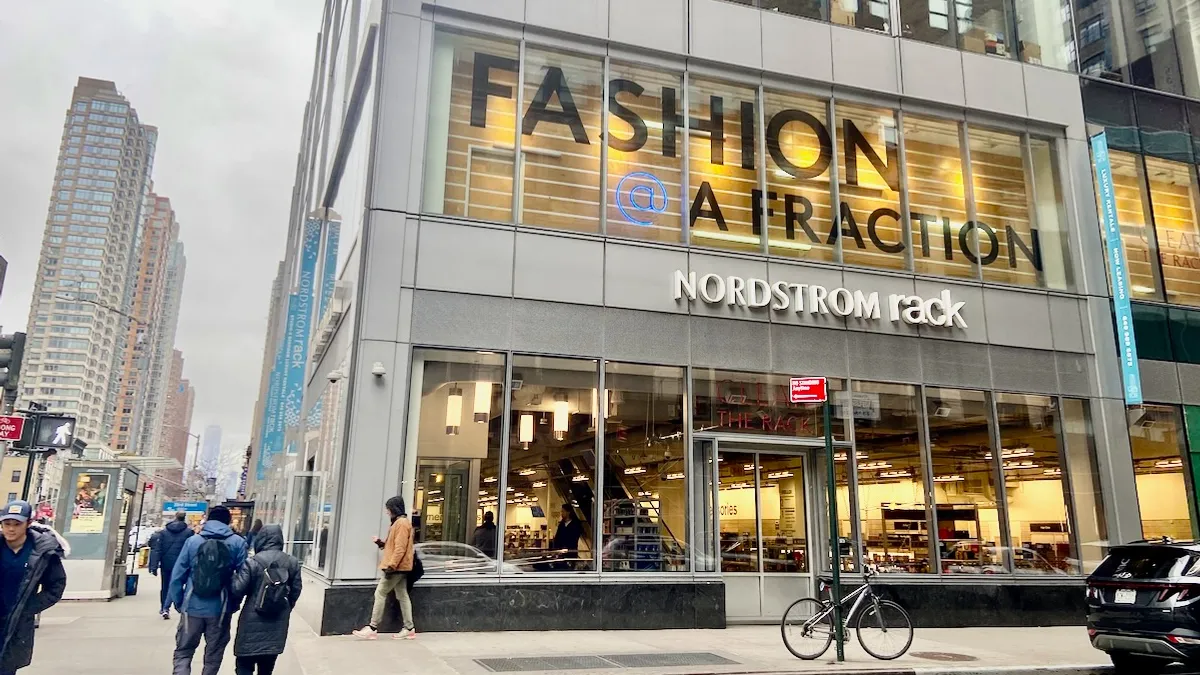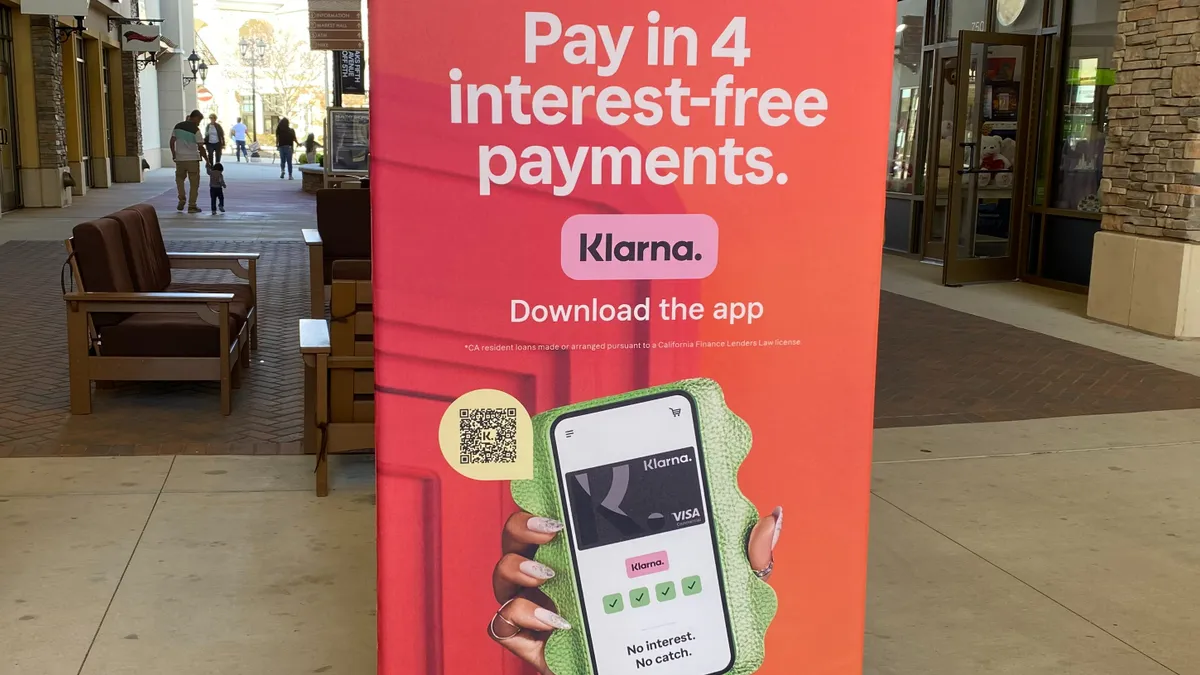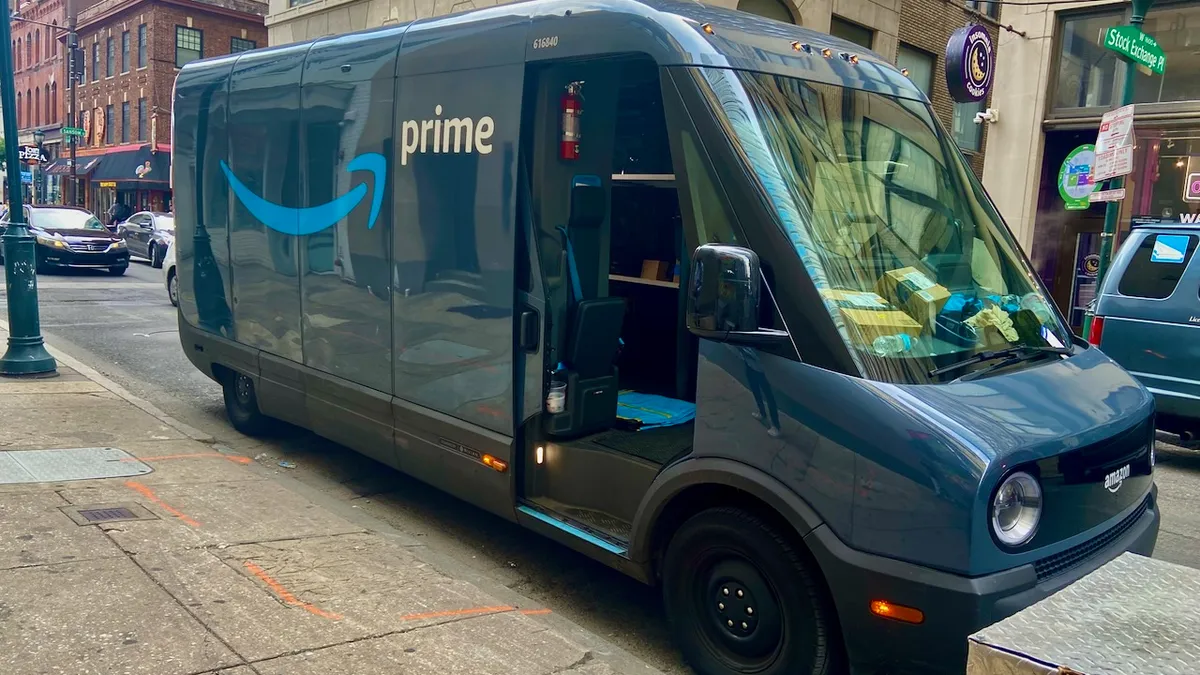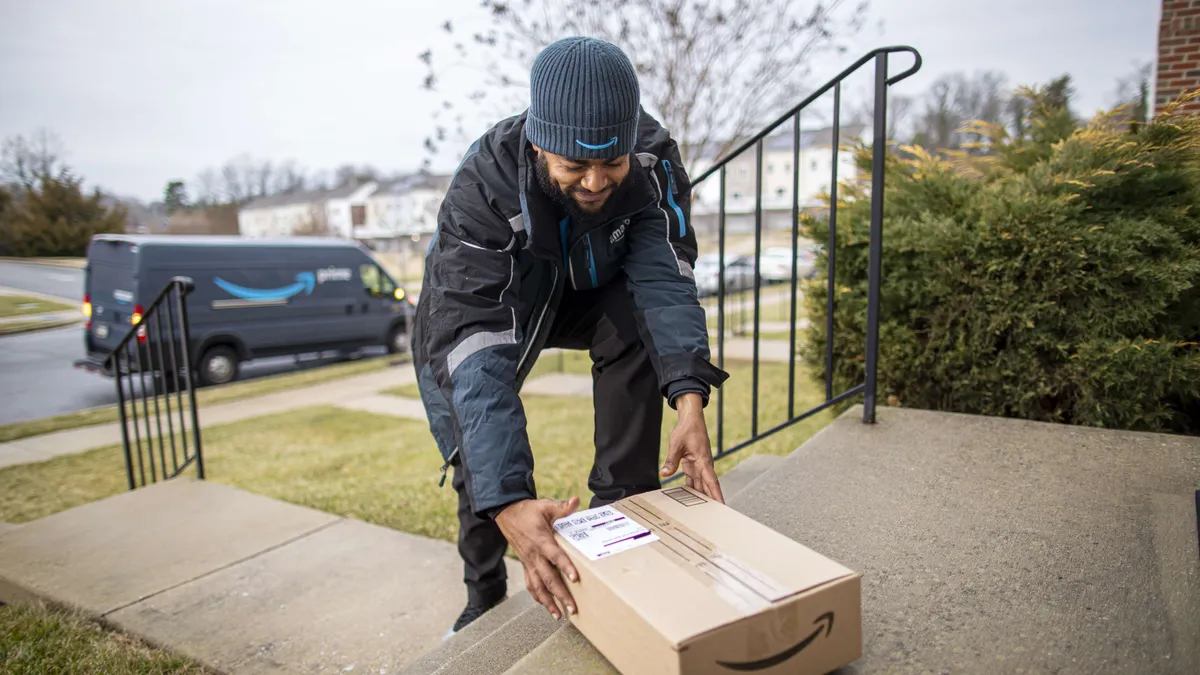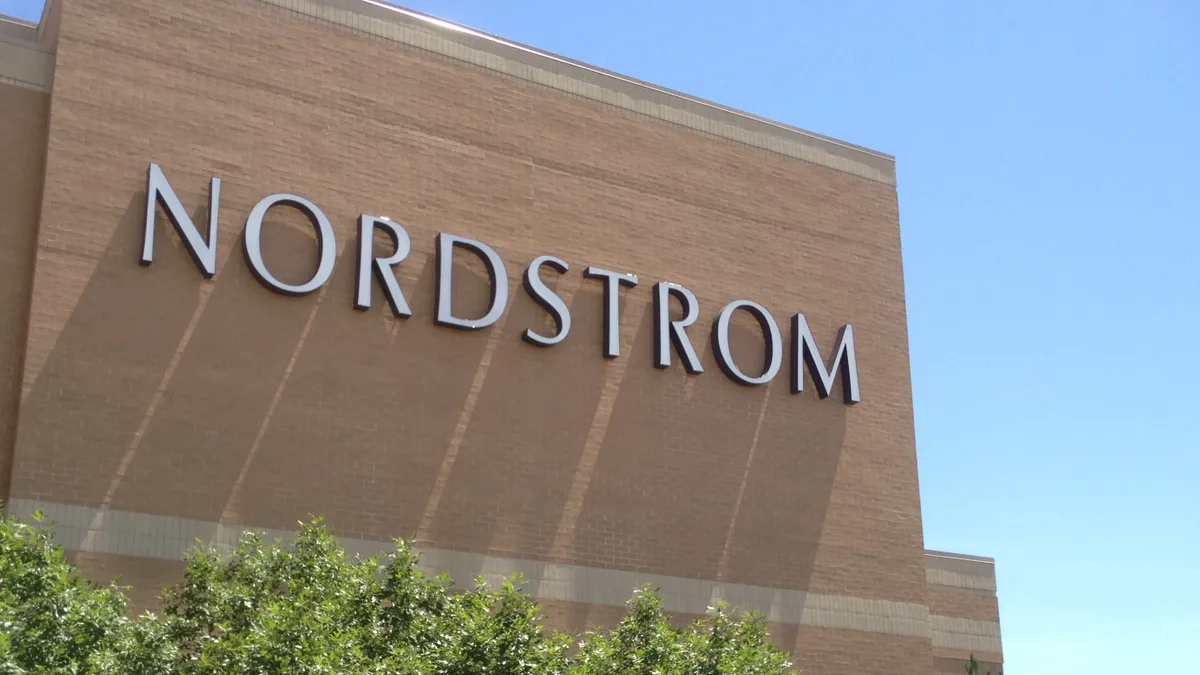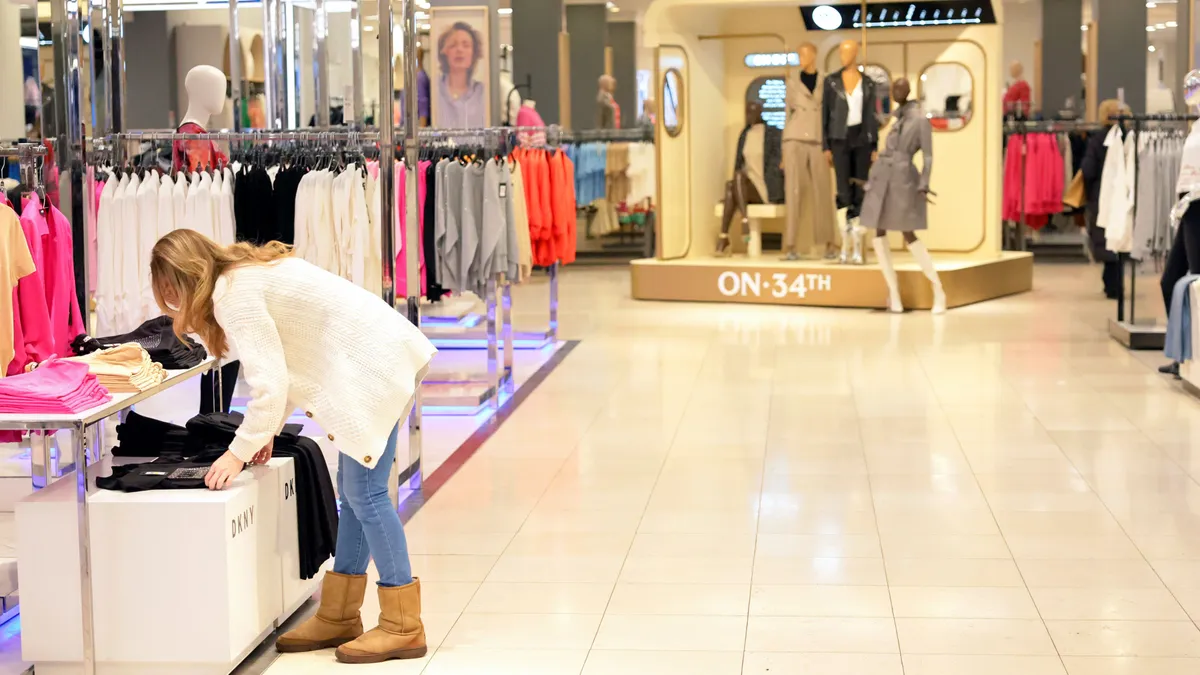Retailers just closed out one of the best Black Friday weekends in a while. While store traffic over Thanksgiving and Black Friday dropped 1% from last year, retailers made up for it with online sales, which rose 25% in the same period, according to a note from Morgan Stanley emailed to Retail Dive. In-store pickup of online orders helped legacy retailers compete online, with such services rising 65% year over year (a record increase), according to Adobe Analytics data.
But "closed" doesn’t seem to be quite the right word, considering that the appeals to shoppers have hardly abated. Extensions of Cyber Monday price cuts and shipping discounts piled into email inboxes the whole week. Strong spending continued into Tuesday, with Adobe expecting the online total for that day to rise 26% to $2.9 billion. Amazon was among the retailers seeking to keep that going into December, announcing that "hundreds of new deals" will be available each day from Sunday, Dec. 2 to Thursday, Dec. 13 — what the e-commerce giant is calling "12 Days of Deals." But Amazon was hardly alone.
It’s already been a long haul: Black Friday promotions started well before Thanksgiving, too. In fact, the Tuesday before Thanksgiving had the most products getting tagged with their first price reduction, according to data from retail and fashion technology firm Edited emailed to Retail Dive. Taking into account all price reductions, 20% of the period’s discounts took place on the Monday before that — a day earlier than in 2017, while just 7% were found on Cyber Monday, according to that report.
"I think a few things are at play," Profitero vice president of strategy and insights Keith Anderson told Retail Dive in an email. "The earlier promotions we've seen appear to be an attempt to shift demand forward and convert shoppers before the competition does — competitive pre-emption. The extended promotional periods we've seen appear to be an effort to smooth the demand over a longer period to lessen supply chain and inventory pressures."
Earlier & longer, but targeted
With holiday price cuts starting earlier and lasting longer, shoppers are being habituated to wait for deals before they buy, and that can decimate the bottom line.
"When you offer giant discounts, there’s a problem of training customers to expect discounts," Corey Pierson, Co-Founder and CEO of customer intelligence platform Custora, told Retail Dive in an interview. "The customers you attract with a big promotion turn out not to be high value repeat customers."
But there are ways to make promotions work, even when they're stretched out over so many days. "Retailers have trained consumers to wait for this time to get the best deal, and I think that trend is continuing," Ed Kennedy, senior director of commerce of e-commerce solutions platform Episerver. "If anything retailers are going to pull back and offer more exclusive and more targeted offers to beat their comp number and protect their margins."
That's especially true for mass merchants like Amazon and Walmart, which already promise "everyday low prices."
"The strategy of breaking that down in daily deals and certain merchandise categories, merchandising on specific days, is a smart strategy," Kennedy said. "That gives us a reason to search that category. Maybe I’ll delay that purchase, but as I'm coming to check the deal, that does engage me."
Amazon over the holiday sales weekend widened their price gap from an average of 10.3% less expensive during the second quarter this year to 13.8% less expensive, according to Profitero's data. But events like Amazon's "12 days" promotion, where each day is limited to a category like "gaming" or "pets," also sharpens shoppers' focus better than the 20% or 30% off sitewide offers from more specialized retailers, according to Kennedy. And it allows the likes of Walmart and Amazon to create a feeling of holiday, Pierson says. "Walmart and Amazon have to be a little more clever," he said. "This is a tactic to compete with the notion that there’s still something special going on."
The brick and mortar advantage
E-commerce players are running out of time sooner than their brick-and-mortar rivals, and in their eagerness to keep shoppers' attention they're fueling more discounts.
The American consumer appears to have the endurance for the longer holiday sales season. The success of this year's Black Friday in the U.S. was a reflection of a strong economy and confident consumer, and indications are that "consumers have yet to run out of steam," according to a note on the shopping weekend from GlobalData Retail emailed to Retail Dive, which found that spending was up strongly even among lower-middle and lower income consumers and that average spend per person was up by 5.3% over last year.
Some of the best promotions came from brick and mortar retailers, which will be able to draw in customers for many more days than their online rivals, according to Episerver, and Kennedy noted that because Thanksgiving was on Nov. 23 in 2017 versus Nov. 22 this year, there are 33 shopping days in 2018 versus 32 days in 2017.
"We usually see sales drop off by Dec. 17 because of shipping issues, but retailers that have invested in omnichannel are going to be able to sell all the way up to Christmas Eve," Kennedy said. "Brick and mortar retailers will drive web to in-store all the way to [that night]. I’m curious to see what happens in those last selling days before Christmas. Next year’s comps are going to be challenging, but I think it’s going to be a good season because consumer sentiment is high and there's that extra day [between Thanksgiving and Christmas compared to last year]."
In fact, 75% of shoppers said that they will finish their Christmas shopping this month, and a full 20% will wait until the last minute before Christmas, according to a survey of more than 500 members of consumer insights firm Numerator's InfoScout OmniPanel. "This is yet another testament to the lengthening of the season both before and after Black Friday weekend, as consumers continue to reshape holiday shopping as we used to know it," Numerator Director of Marketing Ryne Misso said in a statement.
The loyalty opportunity
Some retailers are garnering an upside to their holiday promotions, beyond the chime of the cash register, by designing them to drive loyalty.
Kohl's, in a system used by many supermarkets, gave bonus "cash" through its popular "Kohl's Cash" program, noted Howard Schneider, Vice President of loyalty strategy at loyalty experience company Kobie, who said that Best Buy is also working to sign up customers for its loyalty program when they come in for the big holiday discounts.
"If you give me loyalty points, the redemption rate is 50% or 60%, so it’s huge," Schneider told Retail Dive in an interview. "If all you do is discount and you don’t capture customers in the process, you can discount yourself into the poorhouse. One of the things that a good loyalty program does, if you balance these things, is offer promotion on the one hand and gain loyalty on the other. Do the discounting you have to do because of competitive forces and use the holiday period to get people on board for the short term back in the store and for the long term."
Schneider describes that tactic as springing from a marketing mentality, rather than a traditional merchant one. "Merchant mentality is 'I bought all this stuff in August and I have to push it out now,'" he said. "And the marketer says, 'I want to take advantage of that holiday traffic.'"
But the merchant has to have made the right call in August, to ensure that the right goods are in the store, he also said. "Neither promotions nor loyalty strategies can make up for wrong merchandise, wrong price points, wrong location or poor service," he said.








